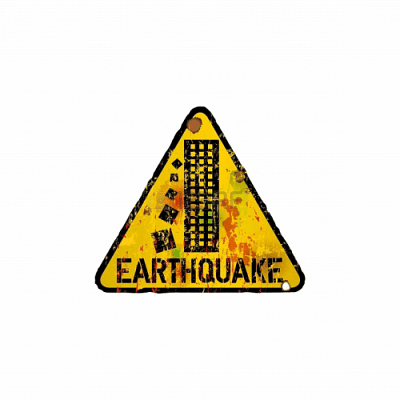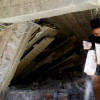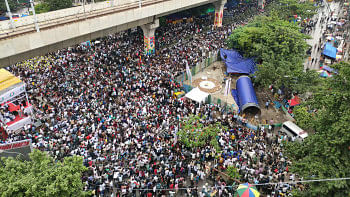How equipped are we to predict earthquakes?

One of the well-researched probabilistic earthquake predictions was issued for San Francisco Bay area in the USA last year. The prediction stated that in the next 30 years, there is a 72 percent chance of having an earthquake of magnitude 6.7 on the Richter scale. In the Los Angeles area, the chances are about 60 percent within the same timeframe. These calculations have been done after carefully interpreting a lot of geophysical and seismic data. Scientific papers have been published reporting these results in a reputed scientific journal. Although scientists know the probability of the next earthquake in California, it is probably impractical that people will be alert for the next 30 years. Thus an alert system is necessary with the help of which the citizens can be warned at the time of large earthquakes.
The state of California in the USA recently introduced an early alert system that is designed to send alerts over a cell phone network after detecting any seismic activity. A cell phone application was released which will alert the user if an earthquake of magnitude 5 or higher is detected. The earthquake system installed in CA, USA is comprised of a dense network of 600 seismometers and efficient and very fast computer programmes. The principle behind this system follows simple seismological laws. When an earthquake occurs it produces two types of seismic waves, P-wave and S-wave. P-wave travels much faster than S-wave. But, the latter causes more damage than the former. Telecommunication signal travels faster than these two types of seismic waves, at a speed of light. Thus, the idea behind this alert system is to capture the shaking from P-wave using multiple seismographs from near the source (as close as possible), process the signal to calculate preliminary magnitude, predict which area will feel the jolts and issue an alert. It gives people up to 10s of seconds to prepare and to make possible life-saving actions which of course depends on the distance between the source and the seismograph. Several countries have developed a similar system before this; Canada developed the early warning spending about 5 million Canadian dollars.
A comprehensive alert system similar to this is much needed for Bangladesh, given that Bangladesh is located in the vicinity of two major tectonic faults, along the Himalayan range in the north and Indo-Burma range in the east. There will be some limitations but the government should start thinking now about developing an earthquake alert system. P- and S-wave travel at the rate of roughly 5.6 km and 3.2 km, every second. Therefore, P-wave generated from an earthquake occurred 100 km away will reach Dhaka city in 17 seconds, and the following S-wave will reach in 34 seconds. If an earthquake can be detected near the source, for example, 100 km away, the city will get about 30 seconds to prepare, assuming that there are some ways to send signals through high-speed communication. Further away the city is from the epicentre, the more time the city will have between the warning and the jolts, thus more time to be prepared.
Many earthquakes that occurred near Sylhet, Rangpur, Chittagong, and Chandpur area in recent years, were of low magnitude. However, the devastating high magnitude earthquakes will likely occur along the plate boundaries. One of the well-documented earthquakes, the 1762 Arakan earthquake ruptured a 700 km long stretch from Cheduba and Ramree to Chittagong. In the north, the 1897 Assam earthquake also caused surface ruptures. Both of these earthquakes were of magnitude 8 and higher. The epicentre of both of these earthquakes was more than 200 km from Dhaka city. Detecting the first wave along the northern border and south eastern border will provide at least a minute or so before the arrival of the devastating S and surface waves.
Different institutions in Bangladesh such as Dhaka University Earth Observatory (DUEO), Bangladesh University of Engineering and Technology (BUET), Geological Survey of Bangladesh (GSB) and Bangladesh Meteorological Department (BMD) operate seismic monitoring networks separately. BUET and AIUB have conducted a study on developing electronics for earthquake early warning system. A collective effort is needed to develop proper hardware, software, and scientific objectives to implement such a project. Given that, BMD already has a network with operational seismograms and communication network, a pilot project can be conducted as a kick-off.
We should not ignore the fact that a high magnitude earthquake in Bangladesh can be devastating. One problem is that people do not have any cultural memory of a high magnitude earthquake. Unlike cyclones, a high magnitude megathrust earthquake in a region happens once in one or two centuries. It is always difficult to predict when the next earthquake will occur. Thus developing an early alert system could save hundreds of lives during a devastating earthquake.
Dhiman Ranjan Mondal is a Post-Doctoral Research Scientist at Haystack Observatory, Massachusetts Institute of Technology, MA, USA.

 For all latest news, follow The Daily Star's Google News channel.
For all latest news, follow The Daily Star's Google News channel. 








Comments